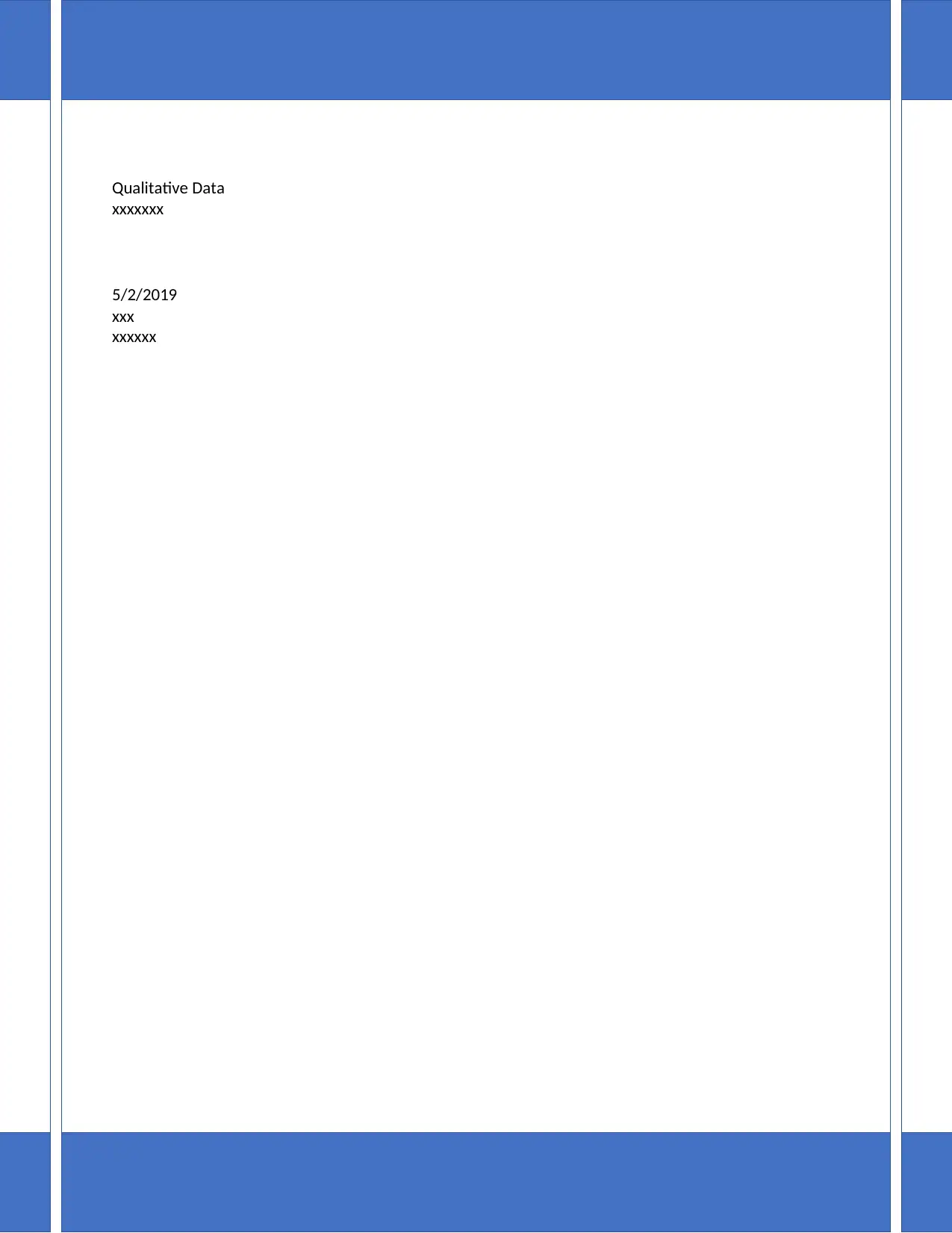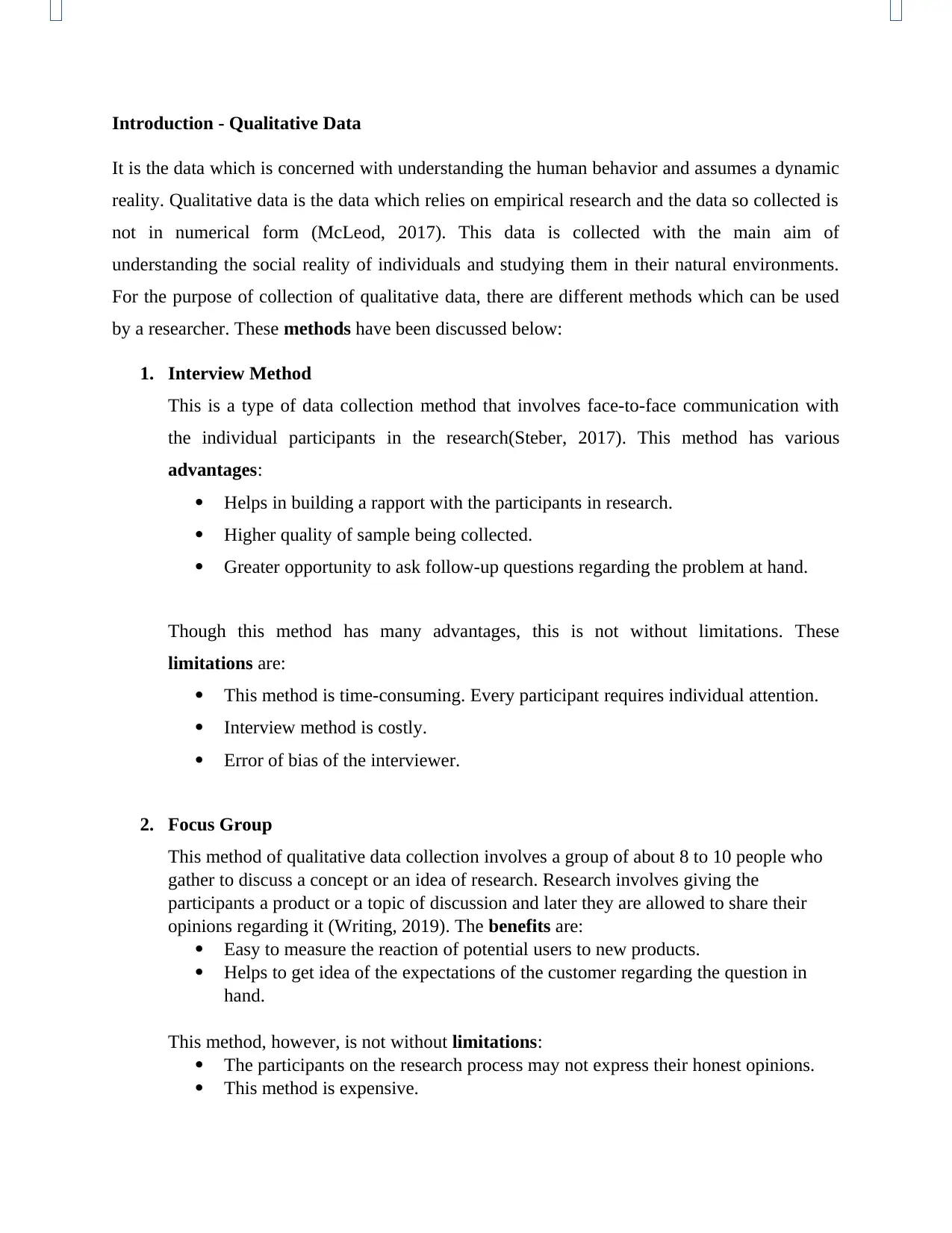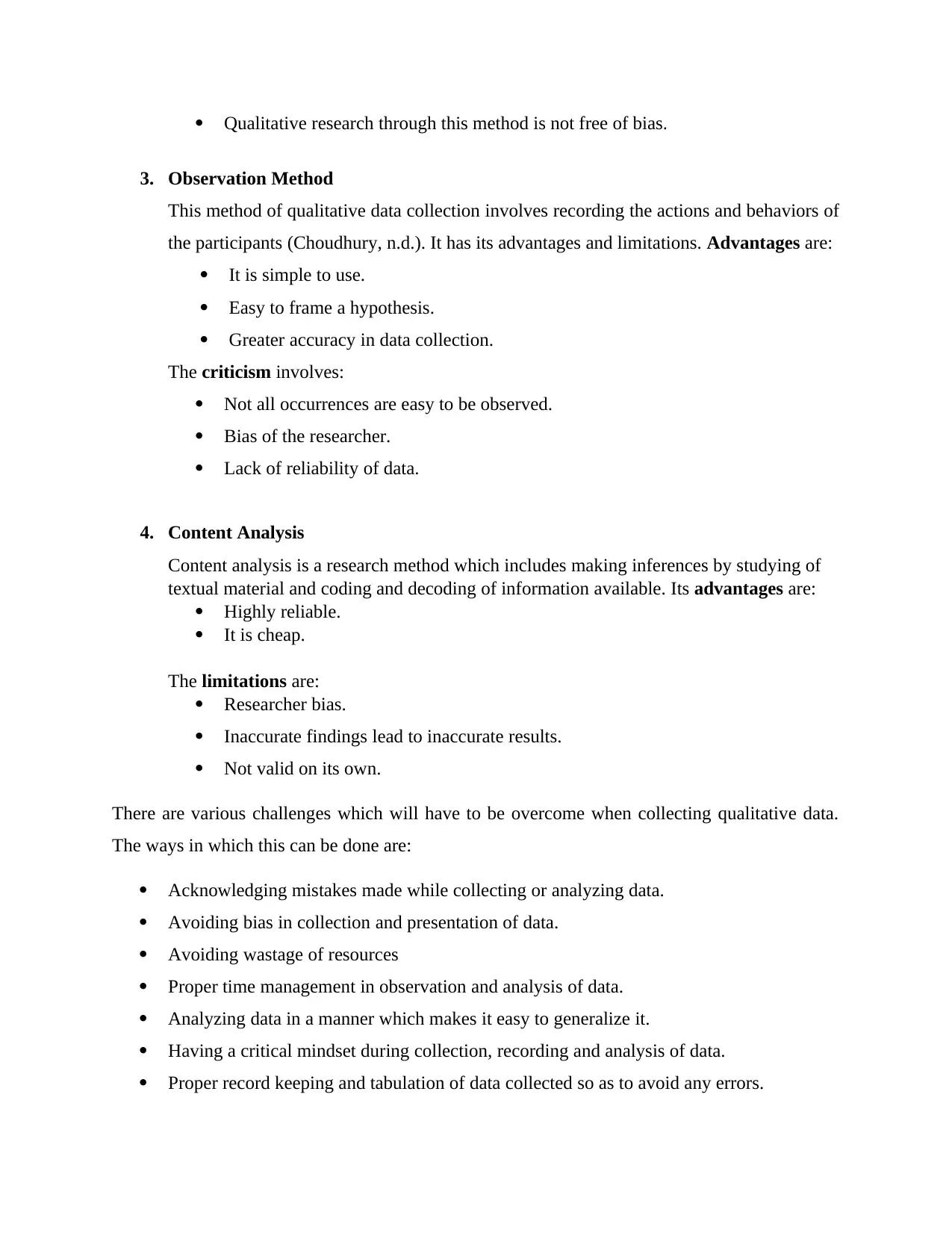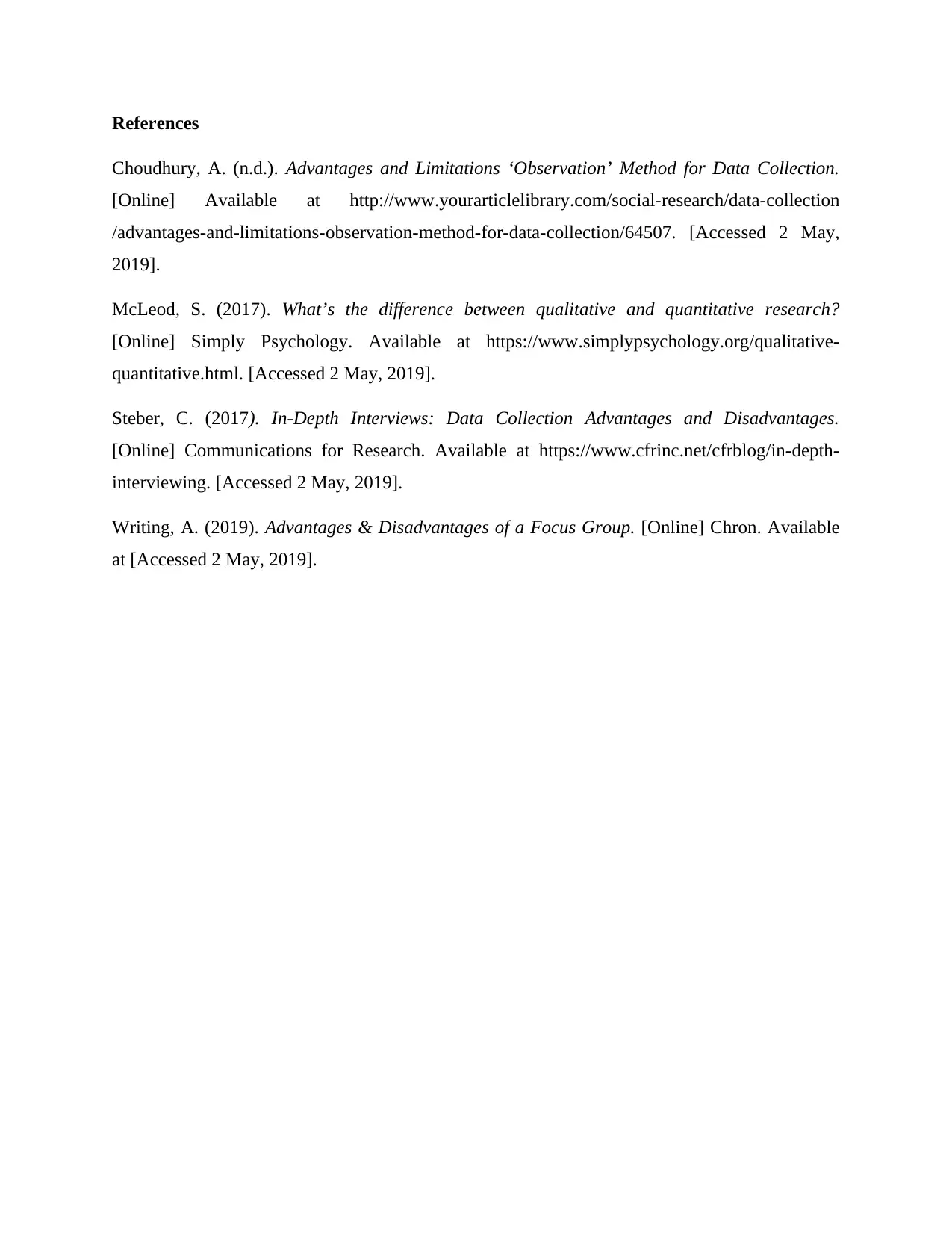Management School: KMGT 672 Qualitative Data Analysis Report
VerifiedAdded on 2023/01/03
|4
|747
|83
Report
AI Summary
This report provides a comprehensive overview of qualitative data, focusing on various collection methods. It explores interviews, focus groups, observation, and content analysis, detailing their advantages, limitations, and practical applications. The report emphasizes the importance of understanding human behavior and social realities through empirical research. It also addresses the challenges in qualitative data collection, such as acknowledging mistakes, avoiding bias, managing resources, and ensuring proper record-keeping. The report concludes by highlighting the significance of critical thinking and proper data analysis to ensure reliable and valid research outcomes. It is a valuable resource for students and researchers seeking to understand and apply qualitative research methodologies.
1 out of 4











![[object Object]](/_next/static/media/star-bottom.7253800d.svg)